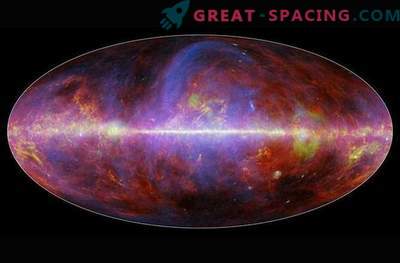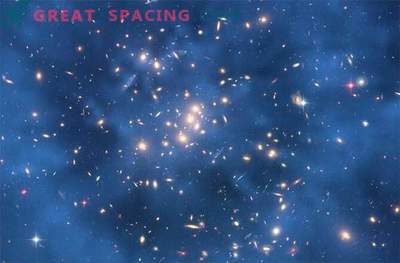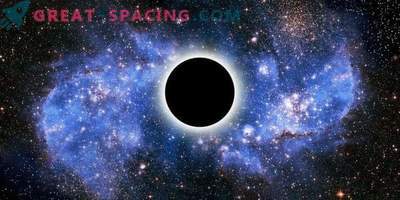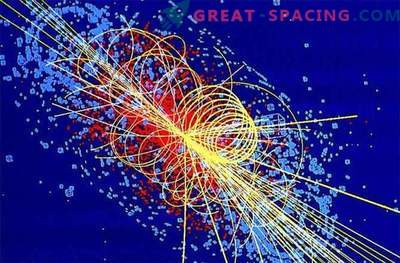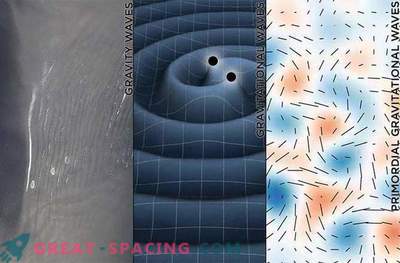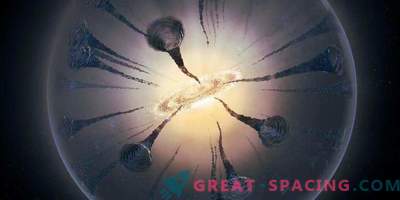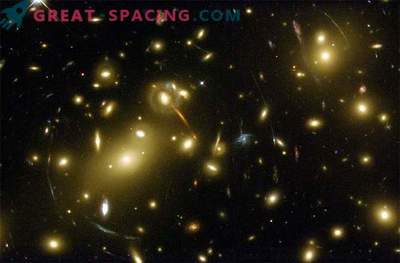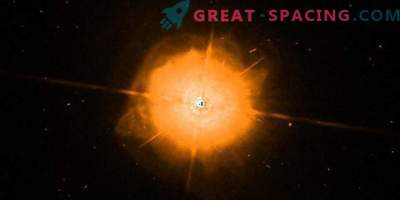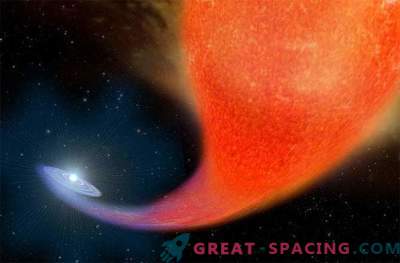
The universe is a rich and complex place, but its geometry is surprisingly simple. Perhaps it will force us to make the next big revolution in the physics of thinking.
Our universe is actually very simple. It represents our cosmological theories, which turn out to be unreasonably complex. This thought was expressed by one of the leading theoretical physicists in the world.
This conclusion may seem illogical. After all, in order to fully understand the true complexity of nature, you have to think bigger, study things in a more detailed way, add new variable equations, and come up with “new” and “exotic” physics. In the end, we learn what dark matter is and get an idea of where these gravitational waves are hiding - if only our theoretical models were more developed and more ... complex.
“This is not entirely true,” says Neil Turk, director of the Perimeter Institute for Theoretical Physics in Ontario, Canada. According to him, the Universe, on its largest and smallest scales, tells us that it is in fact very simple. But, in order to fully understand what this means, we will have to make a revolution in physics.
In an interview with Discovery News, Turok noted that the greatest discoveries of recent decades have confirmed the structure of the Universe on cosmological and quantum scales.
“On a large scale, we plotted a map of the whole sky — a cosmic microwave background — and measured the evolution of the Universe as it changes, depending on the expansion ... and these discoveries show that the Universe is amazingly simple,” he said. “In other words, you can describe the structure of the Universe, its geometry, and the density of matter ... you can essentially describe everything with one number.” The most fascinating outcome of this reasoning is that the description of the geometry of the universe with one number is actually simpler than the numerical description of the simplest atom that we know - the hydrogen atom. The geometry of the hydrogen atom describes 3 numbers that arise from the quantum characteristics of an electron in orbit around a proton.
“It basically tells us that the Universe is smooth, but it has a small level of fluctuations, which this number describes. And it's all. The universe is the simplest thing we know. ”
On the other hand, something similar happened when physicists conducted research in the Higgs field using the most complex machine ever built by mankind - the Large Hadron Collider. When in 2012, physicists introduced the historical discovery of a particle in the Higgs field, the Higgs boson, it turned out to be a simple Higgs type, which is described in the standard model of physics.
“Nature has found a way out with a minimal solution and a minimal mechanism that you could have imagined to give them particle masses, electric charges, and so on, and so on,” said Turk.
Physicists from the 20th century taught us, as soon as you get higher accuracy, and lower the probe deeper into the quantum sphere, you will find a zoo of new particles. Since the experimental results generate the generosity of quantum information, theoretical models predicted more outlandish particles and forces. But now we have reached a crossroads, where many of our most advanced theoretical ideas about what lies “behind” our current understanding of physics turn to experimental results that support their predictions. “We are in such a strange situation when the Universe speaks to us, telling us that these very simple theories that were popular (in the last 100 years of physics) are becoming more and more complex and arbitrary,” he said. .
Turk pointed to string theory, set forth as a “final unified theory,” which presented all the mysteries of the universe in a neat package. In addition, the search for evidence of inflation — the rapid expansion of the Universe immediately after the Big Bang about 14 billion years ago — in the form of primary gravitational waves engraved in the cosmic microwave background (CMB), or the “echo” of the Big Bang. But while we are looking for experimental evidence, we continue to grab at the proverb; experimental data simply does not agree with our unbearably complex theories.
Our Cosmic Origins
The theoretical work of the Turk is centered around the origin of the universe, a subject that has garnered much attention in recent months.
Last year, the organization BICEP2, which uses a telescope located at the South Pole, to study the CMB, announced the discovery of primary gravitational signals from the echoes of the Big Bang. In fact, this is the “Holy Grail” of cosmology - the discovery of gravitational waves that were generated by the Big Bang. This could confirm certain inflationary theories of the universe. But, unfortunately, for the BICEP2 team, they announced the “discovery” prematurely and the Planck space telescope (which also tracks the CMB radiation) showed that the BICEP2 signal was caused by dust in our Galaxy, and not by ancient gravitational waves. What to do if these primordial gravitational waves never find? Many theorists who pinned their hopes on the Big Bang with a subsequent rapid inflation period may be disappointed, but according to the Turk “this is a very powerful key” that the Big Bang (in the classical sense) cannot be the absolute beginning of the universe.
“The biggest problem for me was the description of the Big Bang itself mathematically,” added Turk.
Perhaps this is a cyclical model of universal evolution — where our Universe is collapsing and rebounding again — may better fit the observations. These models do not necessarily generate primary gravitational waves, and if these waves are not detected, perhaps our inflation theories should be thrown out or altered.
As for gravitational waves, which according to forecasts will be obtained as a result of the rapid movement of massive objects in our modern universe, Turk is confident that we will reach the realm of sensitivity, that our gravity wave detectors will detect them very soon, confirming another Einstein-Time prediction.
“We expect that gravitational waves will appear from collisions of black holes over the next 5 years,” he said.
Next revolution?
From large scales to small ones, the Universe seems “scale-free”. And this finding actually suggests that the Universe has a much simpler nature than the current theories suggest. “Yes, this is a crisis, but this is a crisis at its best,” said Turk.
Thus, in order to explain the origin of the Universe and come to terms with some of its most mysterious secrets, such as dark matter and dark energy, we may need to look at our cosmos in different ways. This requires a revolution in physics.
“We need a completely different view of fundamental physics. The time has come for radical new ideas, ”he concluded, noting that this is a great time in human history for young people to be noted in the field of theoretical physics. Most likely, they will change the way we view the universe.

